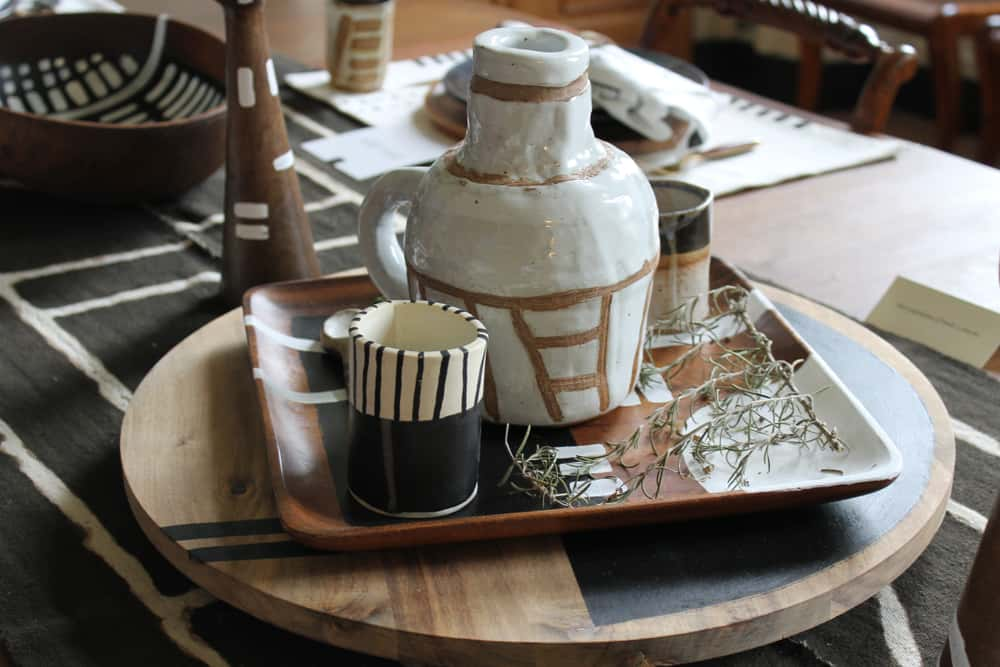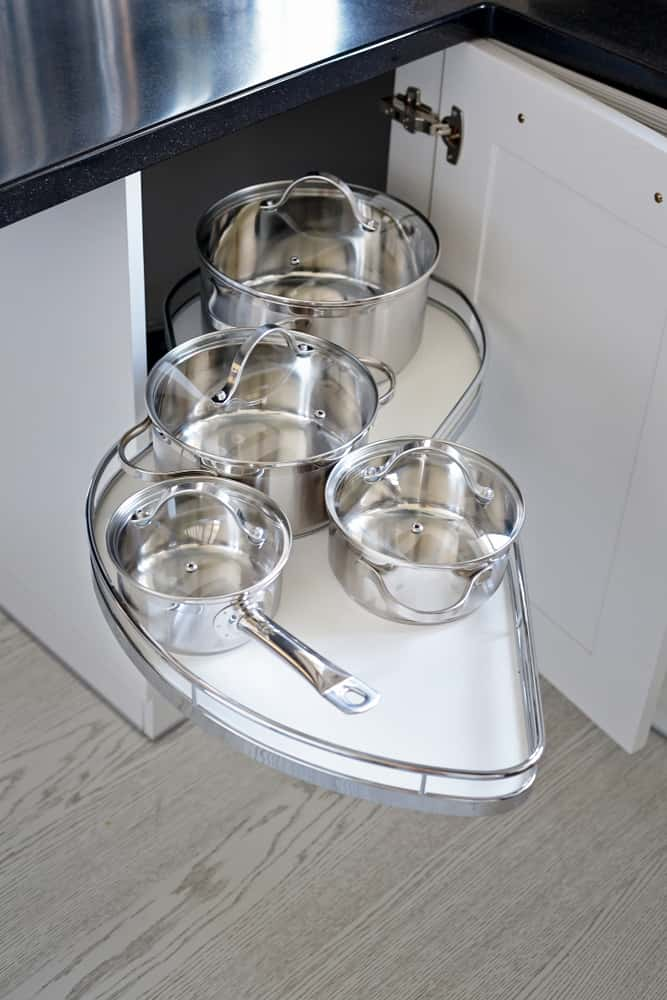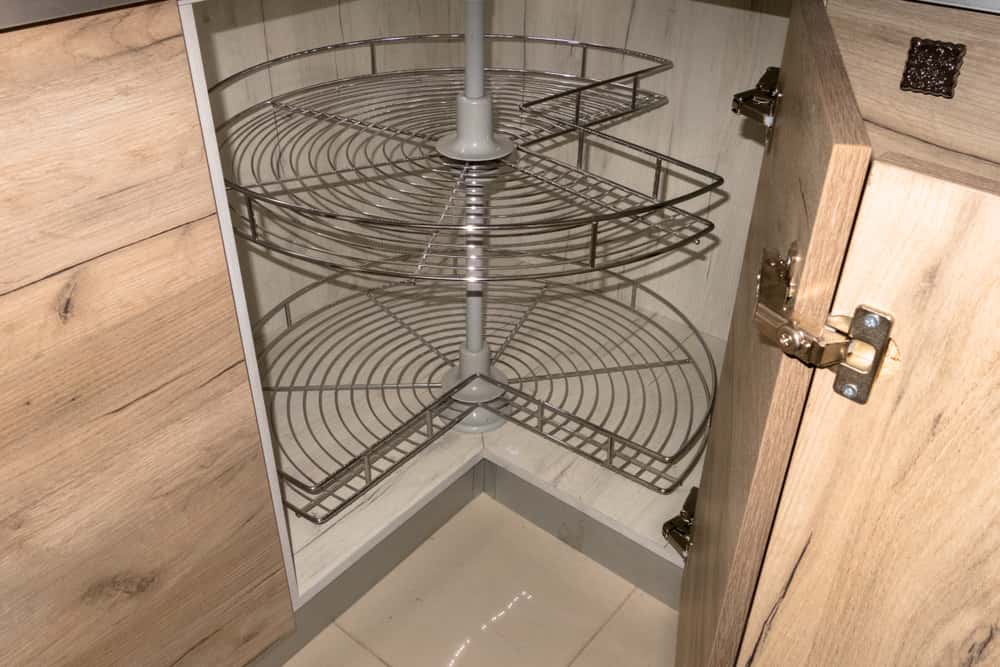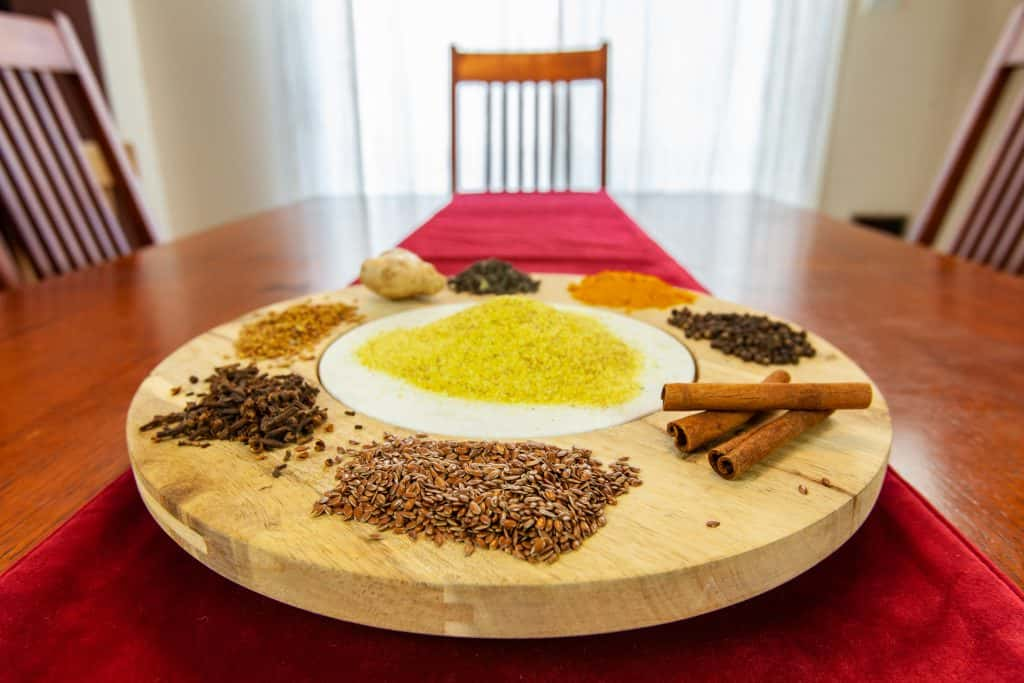The term Lazy Susan was supposedly coined by Thomas Jefferson, who is said to have invented this convenience. As the story goes, his daughter (we can assume her name was Susan) would always complain that there was never enough food, as all the best dishes would be finished before they were served to her! Lazy Susans have an intriguing history, and more of it can be read in this Lazy Susan Kitchen Trivia.
Whether this story is true or not, the Lazy Susan did free many 18th century British housewives from the tedious chore of personally serving everyone who sat down to a meal at their table. Food would be placed on a turntable placed in the middle of the dining table, which was called the Lazy Susan, and as it could be rotated everyone could easily serve themselves instead of waiting to be served.

While the Lazy Susan is still used on tabletops these days, a spin-off of this design has found its way into the modular kitchens of today. In modular kitchen designs, we often find that the corner units below the counter are hard to access easily. By fitting the Lazy Susan unit in the space below the corner, you can easily reach whatever you are storing.
One version of the Lazy Susan is called the S-tray and is designed with two S-shaped trays that swing out when the shutter door is opened. This design works well when only one side of the corner is openable.

Another version is designed as a carousel unit with trays that are made of steel wire or flat metal plates. This unit can be accessed from both sides of the corner and is, therefore, easier to use and keep clean.

Features of Lazy Susans:
Lazy Susans are among the most useful kitchen organizers available. These are some of their features:
- They comprise of a circular rotating tray fixed over another piece of furniture
- Lazy susan can carry plates, cutlery and even heavy utensils
- They are made in various materials, such as plastic, glass, metal (such as aluminium, cast iron) and wood
- Their size varies, from the very small versions used as cake stands to large turntables placed over the dining table
- Their design is increasingly been used to create storage shelves for corner cabinets. Heavy utensils, cast iron skillets and utensils that are not often used, can be stored in such places, making them accessible at any time.
- Lazy Susans are also making an appearance on countertop corners, kitchen islands and refrigerator-freezers.

Do you need to get a Lazy Susan installed in your kitchen? The HomeLane team can suggest the best options, so do reach out for support today!





